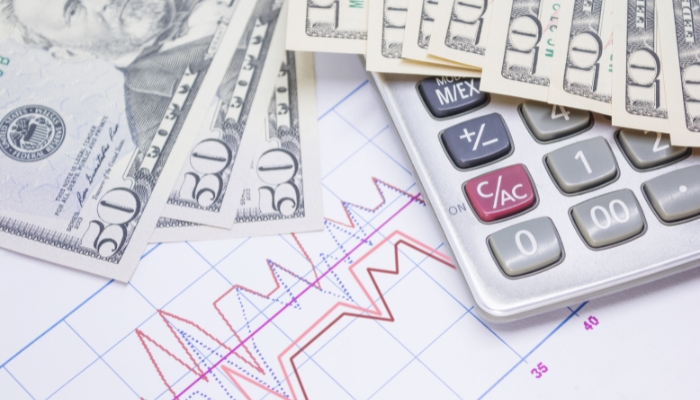US Consumer Spending Holds Strong Amid Inflation Worries
Anúncios
US inflation may have remained elevated in July, but consumers were more focused on enjoying themselves.
Newly released data from the Commerce Department on Thursday revealed that consumer spending surged by 0.8% last month, driven by expenditures on restaurants, live shows, toys, games, and recreational equipment. This marks the most substantial monthly spending gain since January. However, underlying data suggests that this type of activity might not be sustainable in the long term.
The Personal Income and Outlays report for July also indicated that the Federal Reserve’s preferred inflation measure remained high but grew at a monthly rate more aligned with the central bank’s 2% target.
The Personal Consumption Expenditures (PCE) index showed that prices increased by 0.2% on a monthly basis and 3.3% annually.

When excluding the more volatile energy and food prices, the core PCE index showed prices increased by 0.2% from the previous month and by 4.2% for the 12 months ending in July.
Economists had projected monthly increases of 0.2% for both the headline and core indexes, and annual figures of 3.3% and 4.2%, respectively.
“For the [Fed], the best news from this release was the relatively large decline in the price index for goods even as goods consumption remained strong,” Eugenio Alemán, chief economist with Raymond James, wrote in a note. “On the flip side, consumption of services and the price paid for services, will remain the biggest concern for Fed policymakers.”
Goods inflation dropped for the third consecutive month in July, falling 0.3%.
The higher annual readings for the PCE indexes can be attributed to “base effects,” or comparisons to a period last year when inflation was cooling down after soaring to 40-year highs. This trend was similarly observed in the Consumer Price Index report for July, which displayed increases in annual inflation rates but a more moderate 0.2% monthly gain in line with the Fed’s desired level.
“Make no mistake, the monthly sequential momentum around 0.2% is exactly what Fed policymakers are looking for to get inflation back toward the 2% target,” Gregory Daco, chief economist with EY, wrote on Thursday.
The 3.3% headline PCE inflation rate was widely expected after Federal Reserve Chair Jerome Powell highlighted the data point in his economic outlook speech in Jackson Hole, Wyoming, last week. He noted that core inflation remains well above the Fed’s 2% target.
“Getting inflation sustainably back down to 2% is expected to require a period of below-trend economic growth as well as some softening in labor market conditions,” Powell said.
For now, the latest data underscores the resilience of the US consumer, who continues to drive economic growth. Even when adjusted for inflation, spending surged in July, rising by 0.6% from the previous month.
This uptick aligns with other spending data released earlier this month, indicating that retail sales increased by 0.7% in July compared to the previous month, according to seasonally adjusted Commerce Department data. July retail sales were given a boost by Amazon’s Prime Day, which contributed to a stronger-than-usual performance in “non-store” retail sales for the month.
Thursday’s PCE data, offering a more comprehensive look at how consumers are buying across a wide array of goods and services, showed that spending was mostly broad-based — including on goods, a category that has been weaker for much of the past year. Nondurable purchases rose by the most in 10 months and durable goods and services grew by the fastest in six months, Wells Fargo economists wrote in a note issued Thursday.
While on its face, the federal data might seem at odds with the sales pullback reported by retailers like Home Depot (HD), Target (TGT), and others, it’s possible that the gains seen are a result of “noise,” or monthly volatility, in the data, Shannon Seery, economist with Wells Fargo, told CNN. Some consumers also may not yet be fully feeling the effects of high-interest rates, she added.
However, the foundation for that spending is showing some cracks.
Personal incomes showed some weakness last month, growing by only 0.2% from June, which is the smallest monthly gain since January 2022. Unadjusted disposable incomes were flat, and when taking inflation into account turned negative by 0.2%.
The personal saving rate sank to 3.5% in July from 4.3% the previous month, pushing savings to their lowest level since October 2022.
While the overall data keeps the heat on the Fed, I think the expectation is that spending will slow from here,” Seery said. “I think that the runway there is dwindling pretty quickly in terms of how much households can continue to rely on that liquidity.”
Thursday’s data is not expected to shake expectations that the Fed will pause at its next meeting, nor does it totally knock a potential mild recession out of the picture, she said.
Still, the biggest piece of economic data of the week is yet to come. On Friday morning, the Bureau of Labor Statistics is set to release the jobs report for August. Economists are expecting job growth to continue to slow, with employers having added 170,000 jobs this month and the unemployment rate holding steady at 3.5%, according to Refinitiv.
“The latest evidence of slowing consumer spending, easing labor market tightness, cooling wage growth momentum, and slowing core inflation reinforce our expectation that the Fed’s tightening cycle is over, even if policymakers will keep the door open to further tightening,” Daco said.
“Chair Powell highlighted during his Jackson Hole speech that signs of above-trend growth or evidence that labor market tightness wasn’t easing could warrant further tightening of monetary policy. Fortunately, neither condition is in place.”






